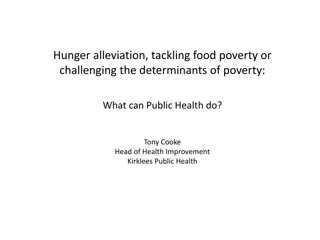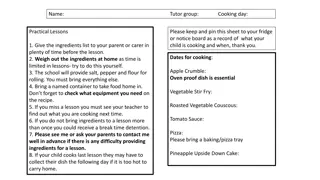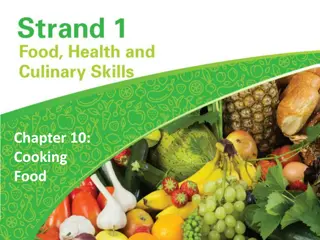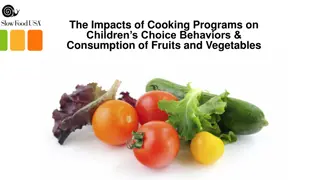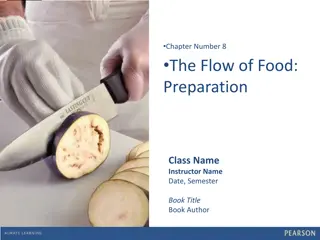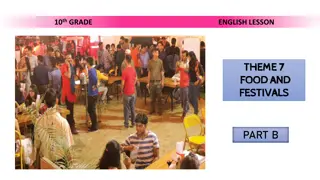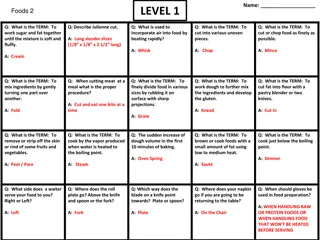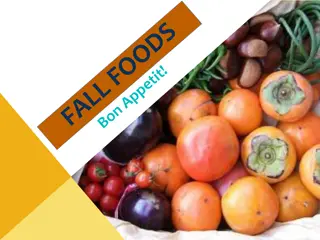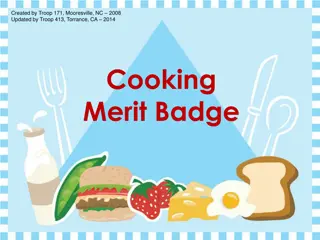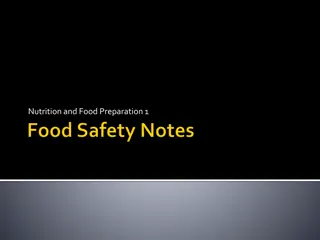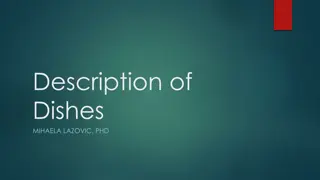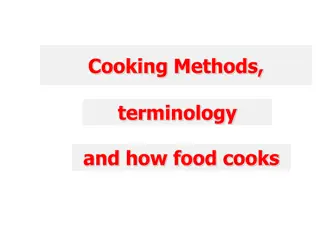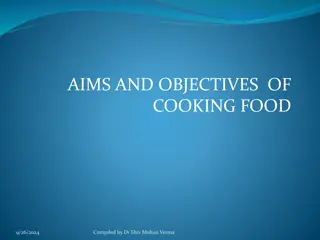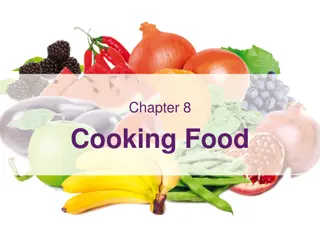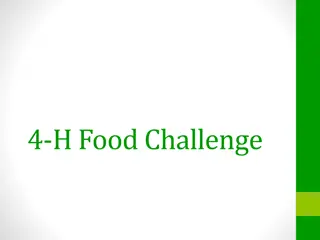Understanding Cooking Techniques and Their Effects on Food
Cooking methods play a crucial role in transforming food through processes like dry, moist, or combination cooking. Heat transfer methods such as conduction, convection, and radiation influence how food is cooked. Dry cooking techniques use oil or hot air, while moist cooking involves using liquid. Combination cooking combines both methods to enhance flavors. Proteins in food undergo coagulation when heat is applied, changing their texture.
Download Presentation

Please find below an Image/Link to download the presentation.
The content on the website is provided AS IS for your information and personal use only. It may not be sold, licensed, or shared on other websites without obtaining consent from the author. Download presentation by click this link. If you encounter any issues during the download, it is possible that the publisher has removed the file from their server.
E N D
Presentation Transcript
Cooking Methods & Techniques Foundations Level 1
How Cooking Alters Food Main Idea-Cooking is heating food to transform it in some way. The process of preparing food for eating. Food is affected in different ways by different cooking techniques.
The degree of change that occurs during the cooking process depends on the length of cooking time, the temperature, and the cooking technique you use. Some methods will produce a great deal of change, while others will not produce very much change. Three cooking techniques are dry, moist, and a combination of both.
Heat Transfer Heat is a type of Energy. Heat travels in three ways: Conduction-the transfer of heat from item to another when the items come into direct contact with each other. Ex: cold plate begins to warm when covered with hot food. Convection-is the transfer of heat caused by the movement of molecules (in the air, water, or fat) from a warmer area to a cooler one. Ex: water heating the bottom of a pan or convection oven by hot air. Radiation-does not require physical contact between the heat source and the food being cooked. Heat moves by way of microwave and infrared waves.
Dry Cooking Technique Uses oil, fat, the radiation of hot air, or metal to transfer heat. No moisture is used in this cooking process. Any moisture that comes from the food evaporates into the air. Evaporates-means that a liquid escapes from a pan as a vapor. Examples-baking and saut ing.
Moist Cooking Technique Uses liquid instead of oil to create the heat energy that is needed to cook the food. Examples: boiling and simmering
Combination Cooking Technique Uses both moist and dry cooking techniques. It is a 2 step process: You start with one and finish with another. Example: Dry Cook-Brown meat Moist Cook-Simmer meat with vegetables in seasoning. Objective is to build up food flavors.
What happens to proteins in food when heat is applied? They Coagulate. Coagulation is where proteins in food change from a liquid or semi-liquid state to a drier, solid state. The longer you subject food to heat, the firmer it will be. Too much heat can toughen the protein. Too much moisture is lost.
What effect does overcooking have on food? During cooking, moisture is lost, food tissues break down, protein coagulates. The texture of cooked food changes.






